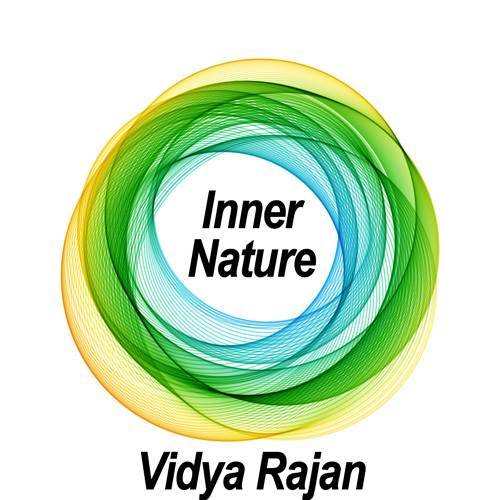By Vidya Rajan, Columnist, The Times
 The death-like appearance of sleepers has fascinated people for millennia; death is even euphemistically called “eternal sleep”. But why do we and other animals need sleep? A good night’s sleep is considered a key to a clear head, and most of us sleep between 6 and 8 hours. But some notoriously high achievers, including Leonardo da Vinci Nikola Tesla, and Voltaire supposedly required only a few hours’ sleep each night. In the majority of the population, serious sleep deprivation results in mental fog and confusion. Thomas Seely and his team showed way back in 2010 that bees are not immune to mental fog: Sleep-deprived forager honeybees were slightly off in distance or direction in the waggle dance in the hive compared to well-rested honeybees.[1] Therefore, it seemed logical that the brain was at rest during sleep just as the body was, and that perhaps during that lull in activity the brain was clearing out metabolic wastes that accumulated during the day. Research has thrown up data that indicates that may not be what sleep is really doing.[2] Read on to find out.
The death-like appearance of sleepers has fascinated people for millennia; death is even euphemistically called “eternal sleep”. But why do we and other animals need sleep? A good night’s sleep is considered a key to a clear head, and most of us sleep between 6 and 8 hours. But some notoriously high achievers, including Leonardo da Vinci Nikola Tesla, and Voltaire supposedly required only a few hours’ sleep each night. In the majority of the population, serious sleep deprivation results in mental fog and confusion. Thomas Seely and his team showed way back in 2010 that bees are not immune to mental fog: Sleep-deprived forager honeybees were slightly off in distance or direction in the waggle dance in the hive compared to well-rested honeybees.[1] Therefore, it seemed logical that the brain was at rest during sleep just as the body was, and that perhaps during that lull in activity the brain was clearing out metabolic wastes that accumulated during the day. Research has thrown up data that indicates that may not be what sleep is really doing.[2] Read on to find out.
Sleep was first studied methodically in 1894. In a heartbreaking experiment to gauge the need to sleep, the researchers kept 10 puppies awake and constantly in motion. Within 5 days all the puppies had died. They had “died more quickly than if they had been starved” – a statement that makes me wonder if a ghastly starvation experiment was also carried out – but the need for sleep was incontrovertible. The brains of the puppies showed blood vessel damage and hemorrhages, so it followed that sleep was something that the brain needed for good health. To check if this need for sleep was confined to puppies, further tests were carried out on dogs (held in floors with spikes so they could not lie down, or kept awake by the jangling of bells), mice and rats. All these animals became disoriented, stopped grooming, showed signs of distress, and then died. All the brains showed degenerative damage, and all the body tissues appeared normal. But the problem with these experiments was that they were uncontrolled, and it was not possible to separate the need for sleep from the problem of being kept in constant motion.
A clever experiment by Allan Rechtschaffen and his team at the University of Chicago, used a novel cage design to add a proper control. The rotating cage was devised with two identical compartments with trapdoor floors, both of which were suspended above water. By this design, both rats were subjected to identical stimuli, but one got all the sleep it wanted and the other was kept sleep deprived. When the control rat slept, nothing happened, but when the sleep-deprived rat lay down to sleep, the trapdoors of both cages opened and both rats were dropped in the water. The sleep-deprived rat showed all the signs of distress expected and died in 15 days. The rats had distended adrenal glands and their brains looked normal. This was puzzling, but the experiment was successful in showing sleep deprivation kills. Then Rechtschaffen and his team modified the experiment. When they judged that a sleep-deprived rat was just a day or two from death, they allowed it to sleep. Amazingly, the rats recovered fully. But most astonishing of all, their electroencephalograms (EEGs) which monitored brain activity blew up! The brains of sleep deprived animals did not shut down and rest – they started running marathons instead!
It turns out that odd things happen to the brain when we sleep. The brain cycles through 4 stages of sleep. Based on the activity of the pupils during this period they are called “non-rapid eye movement” (NREM) and “rapid eye movement” (REM) sleep. EEGs taken during NREM stages 1 and 2, slow wave, and then REM sleep show different types of brain activity. Each cycle takes about 90 minutes, and the sleeping person experiences 4-5 of these cycles each night, sometimes even waking up between cycles. In NREM stage 1, brain activity shows “high-voltage slow waves” with NREM 1 being characterized by sail-like positive occipital sharp transients of sleep (POSTS) and vertex waves (which are inverted in the trace, like a valley). NREM 2 is similar, but distinctive brain waves called sleep spindles and K-waves also show up. (Don’t get it? Me neither. I am just reporting.) In the NREM stages, a person is lightly asleep and may experience muscle twitches. Then comes slow wave (sometimes called NREM 3) sleep when the person’s EEG starts tracking randomly and slow moving high-voltage waves appear. The NREMs and slow wave stages are a dream stage but the dreams are still logical.
When a person slips into REM sleep, things change. Brain waves track as if the person is awake. Although the body’s movement is inhibited, the eyes move rapidly under closed lids. Breathing and heart rate fluctuate. Dreams during this time take on a hallucinatory quality. Experiments indicate that brain activity and maybe memories may be reorganized in all the stages, and the brain is capable of thinking about perceptions (NREM) or generating its own perceptions (REM) [3] (Note: Sleep may be the way the brain processes information and stores it as memories, and the body repairs tissues and the immune system, but that level of simple explanation was not forthcoming in any of the scientific papers I read for this article. I was despairing of researchers finding a simple explanation for the need for sleep; I was despairing even more of understanding what the researchers were saying when they referenced “conscious state hypothesis” and “delta waves”).
Enter, stage left, Dragana Rogulja of Harvard Medical School. Perhaps she did not have enough funding to get big animals – Rogulja worked with fruit flies. Like other animals, fruit flies need sleep too. Fruit flies were held in permanent day conditions and constantly shaken (like Martinis, I suppose) and kept from sleeping. As they dropped dead in vast numbers, the experiments became more nuanced. Genes were swapped in that were thought to power low sleep need. The flies still died. The experiments became even cleverer. Rogulja’s team engineered temperature-sensitive ion channels into flies’ brains that caused certain sleep-associated neurons to open and the flies to remain awake. The flies died when forced to stay awake. If allowed to recover from sleep deprivation, they appeared normal. These were all expected results. But the surprise came from dissections of the gut of sleep deprived flies. The guts showed a huge accumulation of reactive oxygen species (ROS), a known and highly destructive product of metabolism that can damage proteins and DNA. Flies that slept normally did not show the same accumulation. Sleep-deprived flies which were allowed to sleep showed ROS clearing. The data seemed clear. But one simple experiment provided thunderclap validation of the hypothesis. Dosing sleep-deprived flies with an antioxidant was adequate to clear the ROS buildup and they did not die despite being kept awake. Going back over data, markers of ROS damage, such as inflammation and gut damage through oxidation, were present in other sleep-deprived animals. Of course, there are other factors that may be involved in why sleep is essential besides clearing ROS. The microbiomes of sleep-deprived people were slightly different. Certainly the brain shows activation, so maybe sleep is reorganizing thoughts and where they are located in the brain. Genes in families with low sleep needs have identified two genes: BHLHE41 and ARD-1 that are linked with A theory for why sleep is essential needs more work, but experiments are underway.
Until we know more, do what your mom told you. Eat your antioxidant rich broccoli.
References
[1]. Klein, B. A., A. Klein, M. K. Wray, U. G. Mueller, and T. D. Seeley. 2010. “Sleep Deprivation Impairs Precision of Waggle Dance Signaling in Honey Bees.” Proceedings of the National Academy of Sciences 107 (52): 22705–9. https://doi.org/10.1073/pnas.1009439108.
[2]. Why sleep deprivation kills. 2020 Jun 11. Quanta Magazine. https://www.quantamagazine.org/why-sleep-deprivation-kills-20200604/ .
[3]. Hobson, J. Sleep is of the brain, by the brain and for the brain. Nature 437, 1254–1256 (2005). https://doi.org/10.1038/nature04283






